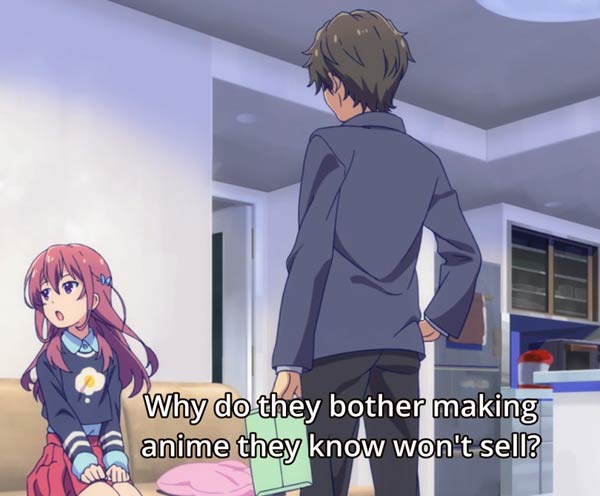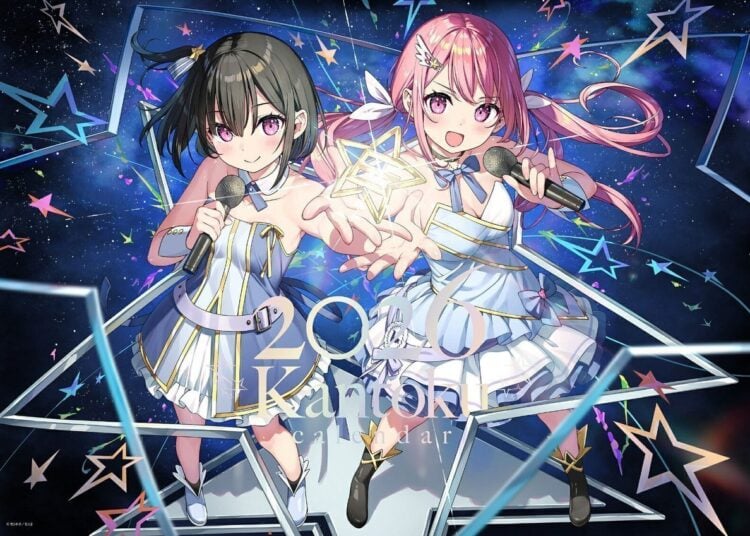As an anime fan, one question I often ponder is, why do they make bad anime, shows which seem destined to fail in the marketplace? Why do companies make so many titles each season, knowing that only a handful will be embraced by fans and become financially successful? I asked our Twitter followers and we had an interesting discussion…
Right off the bat, what defines “bad” anime is highly subjective since everyone’s opinions will differ. A show can be bad for some yet still have many dedicated fans. These fans will naturally come out of the woodwork if I insult their favorite work on social media, so I’ve learned to avoid this most of the time. Some possible “bad” anime examples might include…
- A show that overdoses on stereotypes, like the tired (to some) harem genre, can be hard to get into. And yet we can sometimes be surprised: Infinite Stratos could have been created with a harem-generating computer algorithm, yet it provided lots of fun backstory. Saekano was another pleasant surprise, deconstructing classic themes of tsundere and harems and making them into something really awesome.
- Some anime is obviously “inspired” by previous works, like Digimon (from Pokemon) or Kabaneri of the Iron Fortress (from Attack on Titan). Are you turned off by series that have obviously been inspired by other shows?
- Often we can like different shows for different reasons. I remember hating ZZ Gundam because of its goofy, tongue-in-cheek plot, so different from its dark and awesome predecessor, Zeta Gundam. And yet, from a technical perspective, ZZ Gundam arguably had the highest quality animation of anything in the 80s, plus some great characters.
- Sometimes anime is tied to a successful property such as a mobile game, like Macross Delta or the Valkyrie Drive Siren series. That way, even if the anime fails spectacularly (*cough* BanG Dream! *cough*), it can serve as advertising for the mobile game.
- Often anime is judged to be “bad” if it doesn’t do honor to the original manga or novel the story is based on. Personally, I enjoy it when the stories differ, which allows me to enjoy two different versions of the same story.
- Fans are often influenced by other fans, like when everyone thought Sword Art Online was the neatest thing since striped pantsu. Once the show had become so popular that even the frat boys at the local college knew it, fans pulled a U-turn, deciding that SAO was suddenly terrible. We did this with Ranma 1/2 back in the 80s, loving this incredible show we’d discovered until all the riajuus (filthy casuals) at UCSD started watching it.
- Often series start out with bold and interesting stories, then lose their way (King’s Game The Animation and Mayoiga come to mind). It doesn’t help when the studios, seeing that the show will fail financially, cut the budget visibly around episode 5.
- Of course, studios don’t know in advance what shows will be massively successful (Free!, Love Live!, Osomatsu-san) and which may be well-received by fans but ultimately fail financially. And lurking in every anime season is the potential for a huge unforeseen hit, like Kemono Friends, which took everyone by surprise.
One show I enjoyed was Gi(a)rlish Number, an anime about three young seiyu who break into the business, making a mediocre anime in the process. The characters go out of their way to discuss the problems with industry: too many series being made, ridiculously low salaries, cynical fans who refuse to watch a show because they “heard it was shit” on the Internet. It was quite a good show, in a meta sort of way, so give it a try if you want to learn more about the anime industry!
What’s your anime role model, the character you feel most connected to? Tell us on Twitter!
J-List always carries the best doujinshi from Japan’s top artists, and today we’ve made a huge update of popular books from the most recent summer Comiket, C94. The stock of all doujinshi is limited though, so you should order quickly!
















